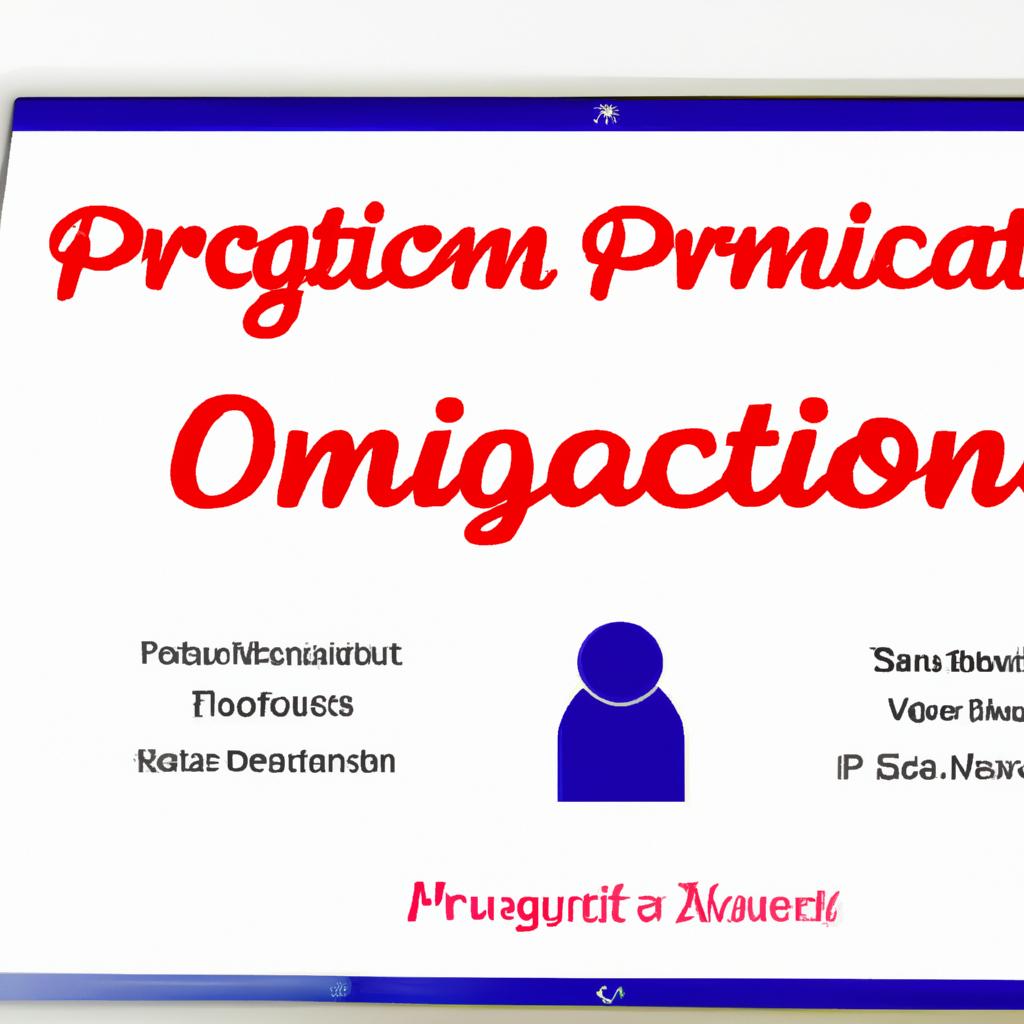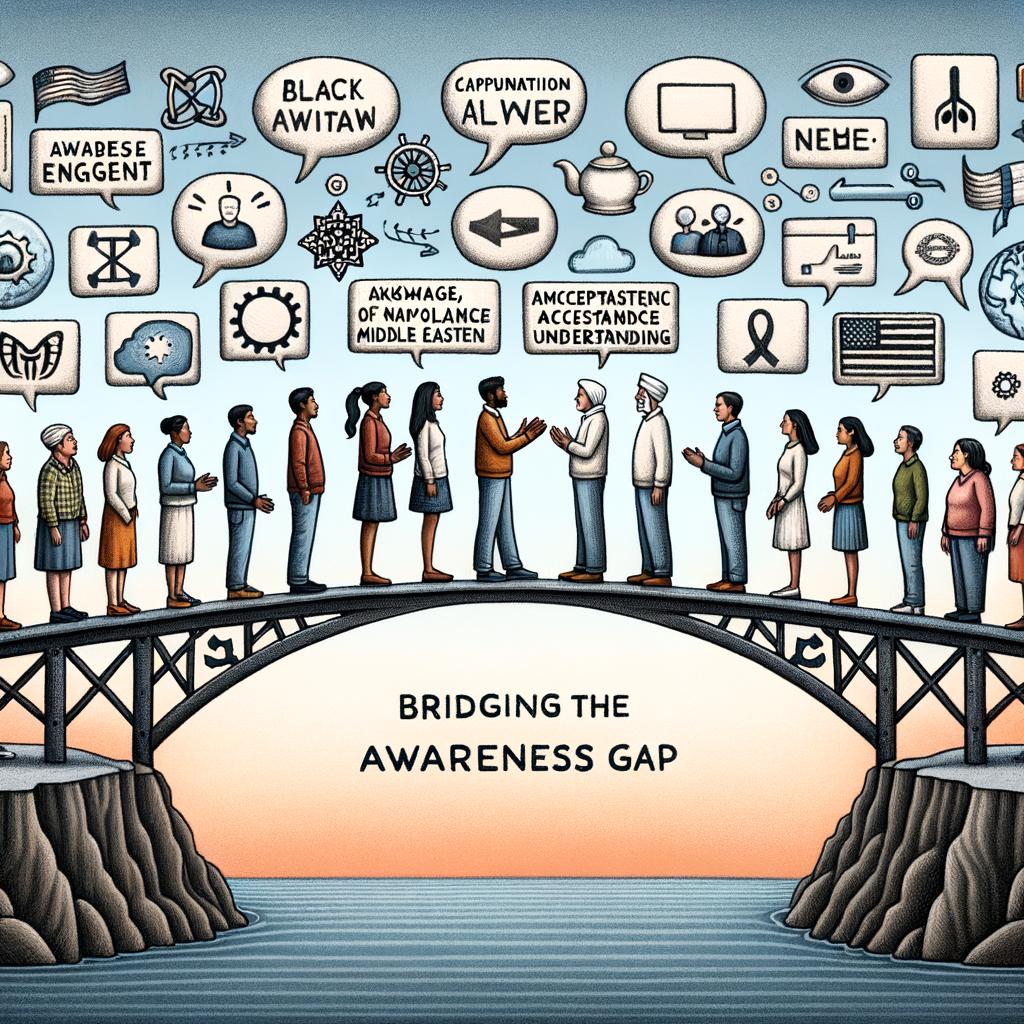As the sun rises on a new era of employee benefits, financial wellness programs have emerged as a beacon of hope, promising a future where financial literacy and security are within everyone’s grasp. These programs, crafted to guide individuals through the convolutions of personal finance, offer an array of tools and resources designed to foster fiscal responsibility and peace of mind. Yet, like a grand library filled with books that remain unopened, these programs sit largely underutilized, shrouded in a haze of mystery and disinterest. What then, holds employees back from unlocking the potential of these financial treasures? In the following exploration, we journey through the labyrinth of reasons and revelations, seeking to uncover the elusive factors that deter participants from embracing financial wellness programs—a quest to transform dormant resources into pillars of support in the lives of those they are meant to serve.
Table of Contents
- Understanding Behavioral Barriers to Financial Wellness
- Lack of Personalization in Program Offerings
- Communication and Engagement: Bridging the Awareness Gap
- Empowerment Through Education: Practical Steps Forward
- Q&A
- In Conclusion

Understanding Behavioral Barriers to Financial Wellness
Diving into the complexities behind financial wellness program participation, one must confront the formidable behavioral barriers that deter many individuals. One quintessential element is the status quo bias. Participants often cling to their existing financial habits, even when new options promise improved outcomes. This inertia can be a major hurdle in encouraging the adoption of financial wellness programs.
Another significant factor lies in lack of trust. Financial literacy and wellness programs can be met with skepticism, particularly if potential users have had negative past experiences with financial institutions. Trust-building becomes a cornerstone of any successful financial wellness initiative, often requiring transparent communication and proven benefits to foster confidence.
Further complicating engagement is the paradox of choice. An overabundance of options can overwhelm participants, leading to decision paralysis rather than action. Simplifying choices and offering guided, personalized recommendations can be effective measures in alleviating this cognitive load.
Emotional and psychological barriers also play a crucial role. Fear of judgment or embarrassment about one’s financial situation can prevent individuals from participating. Crafting a non-judgmental, supportive environment is essential to mitigate these feelings and encourage users to take advantage of available resources without shame.
The phenomenon of instant gratification versus delayed benefits often stymies engagement as well. Financial wellness programs typically yield long-term benefits, yet participants may prioritize immediate rewards. Incentivizing initial participation with short-term perks can bridge this gap, nurturing longer-term commitment and eventual habit change.
Communication barriers between program facilitators and participants cannot be underestimated. Financial jargon can be a significant deterrent, making otherwise beneficial programs appear inaccessible. Utilizing clear, jargon-free language and visually appealing materials ensures that these resources are more approachable and easier to understand.
Lastly, the perception of value influences participation rates. If potential users do not recognize immediate, tangible benefits, they may opt out. Demonstrating success stories, user testimonials, and quantifiable outcomes can effectively illustrate the program’s value, enhancing its appeal.
| Barrier | Impact on Participation |
|---|---|
| Status Quo Bias | Inhibits behavioral change |
| Lack of Trust | Causes skepticism and disengagement |
| Paradox of Choice | Leads to decision paralysis |
| Fear of Judgment | Deters open participation |
| Instant Gratification | Devalues long-term benefits |
| Communication Barriers | Creates accessibility issues |
| Perception of Value | Reduces perceived program utility |

Lack of Personalization in Program Offerings
One of the significant barriers to participant engagement in financial wellness programs is the absence of personalization in the program offerings. Financial wellness is an incredibly personal journey, and a one-size-fits-all approach rarely resonates with the diverse needs of individuals. When participants feel that a program is not tailored to their specific circumstances and goals, they are less likely to utilize the available resources.
Personal financial situations can vary widely, influenced by factors such as age, income level, family status, and financial literacy. For example, a recent college graduate drowning in student loans will have different priorities than a middle-aged couple saving for retirement. Without personalized guidance, both individuals may find the program irrelevant to their needs.
Financial wellness programs often fail to address these varied needs by offering generic advice that might not apply to everyone. For instance, standard budgeting tips may not be beneficial to someone who is struggling with high medical bills. On the other hand, they might be greatly appreciated by an individual who is trying to save a portion of their paycheck each month but does not know where to start.
Common Gaps in Personalization:
- Generic Content: The same modules and tips for everyone.
- Lack of Customizable Tools: Basic calculators that don’t adapt to individual financial situations.
- Inflexible Learning Paths: One predetermined path for all, with no room for adjustments.
When financial wellness content lacks specificity, it can seem generic and uninspiring. Participants may quickly identify when tools and resources are not designed with their specific challenges in mind. For example, software offering a ‘one-size-fits-all’ budget template might be ignored if it doesn’t account for the unique variables of each person’s finances.
| Age Group | Common Financial Goals | Ideal Program Feature |
|---|---|---|
| 20s | Student loan repayment, first home purchase | Tailored loan repayment plans |
| 30s | Child education savings, career growth | Customized savings accounts |
| 50s | Retirement planning, debt reduction | Personalized investment advice |
Furthermore, the absence of personalization often extends to the communication channels used in financial wellness programs. Some participants may prefer face-to-face consultations, while others might favor virtual sessions, emails, or even text notifications for tips and reminders. When programs do not allow such preferences, they risk losing engagement from those who feel their preferred method of communication isn’t utilized.
The value of a personalized experience cannot be overstated. Individuals are more likely to invest time and effort into a program that recognizes their personal struggles and aspirations. Financial wellness initiatives that incorporate elements such as personalized coaching, adaptive learning modules, and customized financial planning tools can significantly enhance user engagement and satisfaction.
To bridge this personalization gap, organizations could harness the power of data analytics and AI. By analyzing user data, financial wellness programs can dynamically adjust the content, advice, and tools to better fit the needs of individual participants, therefore increasing the chances of a successful and participative experience.
Moving forward, the emphasis should be on creating a participant-centered approach rather than a generic one. This shift will not only make financial wellness programs more effective but will also encourage participants to recognize the value they offer in achieving their unique financial goals.

Communication and Engagement: Bridging the Awareness Gap
The core issue often lies in the communication and engagement strategies employed. Without a clear, persuasive message, even the most beneficial programs can remain underutilized. Below, we dive into how to transform communication strategies to bridge the awareness gap.
First, understanding the target audience is key. Many financial wellness programs are designed with ambiguous, broad-stroke solutions that fail to resonate on a personal level. Personalization, driven by data analytics, can drastically change participation rates. When participants see tailored messages that align with their unique financial challenges, they are more likely to engage.
Another crucial factor is breaking down complex information into digestible, understandable pieces. Financial literacy can be daunting, full of industry jargon and complicated concepts. Consider creating short, engaging content pieces such as video snippets, infographics, and blog posts to demystify these topics. This approach makes it easier for participants to grasp key takeaways without feeling overwhelmed.
- Short Video Tutorials: Simplify complex financial concepts
- Interactive Webinars: Real-time Q&A sessions to engage participants
- Infographics: Visual storytelling to break down data and concepts
Employing multiple communication channels can also ensure that the message reaches everyone. Some participants might prefer email updates, while others could be more responsive to mobile notifications or social media posts. Diverse mediums, integrated through a comprehensive communication strategy, boost the visibility and reach of these programs.
An often-overlooked aspect is the psychological barriers that can prevent engagement. Addressing these through motivational messaging can be highly effective. Highlight success stories and testimonials from peers who have benefitted from the program to build trust and reduce apprehensions. Showcasing attainable benefits can inspire participants to take that first crucial step.
Activity-based engagement strategies also foster greater involvement. Creating challenges, reward systems, or gamified learning experiences can significantly enhance participation. People are more likely to engage in activities that are not only educational but also fun and rewarding.
| Engagement Strategy | Impact |
|---|---|
| Personalized Messaging | Higher relevance and response rates |
| Interactive Webinars | Enhanced understanding and real-time feedback |
| Gamification | Increased motivation and participation |
maintaining an ongoing dialogue with participants is essential. Regular surveys and feedback forms can help gauge understanding, identify pain points, and refine program delivery. This approach creates a loop of continuous improvement, ensuring the services remain relevant and effective.
By leveraging these techniques, organizations can significantly improve the uptake and effectiveness of financial wellness programs, ultimately leading to a more financially literate and engaged workforce.

Empowerment Through Education: Practical Steps Forward
Financial wellness programs aim to provide individuals with the tools and knowledge necessary to manage their finances effectively. Yet, despite their availability, participation rates remain disappointingly low. To understand why this gap exists, we must delve into the underlying factors that hinder engagement.
One key issue is awareness. Many employees are simply unaware that financial wellness programs exist. Companies might promote these programs during initial orientation, but fail to remind employees regularly. Effective communication strategies need to be implemented to ensure ongoing awareness.
Relevance plays a significant role as well. If the program content does not resonate with participants’ current financial situations, they might see little value in engaging. Tailoring programs to address a range of financial needs—from student loans to retirement savings—can make them more appealing.
Accessibility is another crucial factor. Employees may find it challenging to attend workshops or webinars due to time constraints. Offering flexible options such as on-demand videos, self-paced modules, and mobile-friendly resources can enhance participation.
Barrier
- Lack of awareness
- Irrelevant content
- Inaccessible formats
Solutions
- Better communication strategies
- Personalized content
- Flexible delivery methods
A lack of trust in the program and its providers can also deter engagement. Employees need to feel confident that the information presented is accurate and delivered by credible experts. Establishing partnerships with reputable financial advisors and institutions can increase trustworthiness.
Engagement tools such as incentives can make a significant difference. Participants might be more inclined to join if they know they will receive a tangible benefit, such as gift cards or wellness points, upon completion of the program.
| Strategy | Benefits |
|---|---|
| Communication Campaigns | Increased Awareness |
| Tailored Programs | Enhanced Relevance |
| Flexible Learning Formats | Greater Accessibility |
Engaging user feedback is another practical step. Regularly collecting and analyzing feedback can help tailor the program to better meet participants’ needs. This practice can also help in identifying any overlooked barriers or misunderstandings about the program’s purpose and benefits.
leadership involvement can drive participation. When company leaders actively promote and participate in financial wellness programs, it sends a strong message about their value. Employees are more likely to engage when they see their leaders leading by example.
By addressing these practical steps, organizations can enhance participation in financial wellness programs. The aim is to create an environment where financial education is not only accessible but also relevant and trusted.
Q&A
### Q&A: Unpacking the Puzzle of Why Financial Wellness Programs Are Underutilized
Q: What are financial wellness programs?
A: Financial wellness programs are initiatives offered by employers to help employees manage their financial health. These programs typically cover a range of services, such as financial education, budgeting tools, credit counseling, and retirement planning.
Q: Why did companies start offering these programs?
A: Companies introduced financial wellness programs to not only aid their employees in achieving financial stability, but also to enhance overall job satisfaction, productivity, and retention. The logic is simple: financially stress-free employees tend to be more focused, motivated, and engaged at work.
Q: Despite the apparent benefits, why aren’t participants using these programs?
A: The reasons are multi-faceted. Firstly, there is often a lack of awareness. Many employees simply don’t know these programs exist. Additionally, the perceived complexity and time commitment associated with these resources can deter participation. Some employees might also feel embarrassed about their financial situations and prefer to avoid discussing them, even if anonymously.
Q: Is awareness the biggest hurdle?
A: Awareness is certainly a significant hurdle, but it’s not the sole barrier. Engagement often suffers from a lack of personalization. Generic advice or services may not address the unique needs of individual employees, leading to a sense of disconnect or irrelevance which discourages utilization.
Q: How does the design of the program impact participation?
A: Program design matters immensely. If the offerings are too complicated or require a significant time investment, employees are less likely to engage. User-friendly, easily accessible platforms that integrate seamlessly into an employee’s daily routine have a higher chance of being used.
Q: Do employees trust these programs?
A: Trust can indeed be a critical issue. Employees might doubt the confidentiality and impartiality of the advice provided, especially if they suspect that the employer might have access to their financial details. Ensuring strict data privacy and separating program functions from HR operations can help build trust.
Q: Can financial literacy levels among employees influence program participation?
A: Absolutely. Employees with lower financial literacy might feel overwhelmed or intimidated by financial wellness programs. Additionally, those who are confident in their financial knowledge may not see the need to participate. Tailoring education levels and offering more targeted support can bridge this gap.
Q: What role does company culture play in the success of these programs?
A: Company culture plays a crucial role. If financial conversations are normalized and encouraged within the workplace, employees are more likely to participate. On the contrary, if financial struggles are stigmatized, employees may shy away from using these resources.
Q: Are there any successful strategies to increase participation?
A: Several strategies can prove effective. Promoting the programs through regular, clear communication, offering incentives for participation, and incorporating testimonials from other employees can boost engagement. Additionally, personalizing the content to meet diverse financial needs and simplifying access through digital platforms can lower barriers to use.
Q: What’s the future outlook for financial wellness programs?
A: As financial stress continues to be a significant issue for many, the demand for effective financial wellness programs is likely to grow. Employers who innovate and adapt their offerings to be more inclusive, personalized, and accessible will likely see increased participation rates, ultimately benefiting both employees and the overall organization.
Closing Thoughts
Addressing underutilization of financial wellness programs requires a multifaceted approach embracing awareness, personalization, and trust. By focusing on these areas, employers can help their workforce achieve better financial health, which in turn, can foster a more productive and content work environment.
In Conclusion
As we navigate the intricate tapestry of financial wellness programs, understanding the nuanced reasons behind their underutilization becomes paramount. This exploration reveals more than just gaps in communication or engagement; it underscores the diverse financial landscapes in which participants find themselves. Ultimately, bridging this chasm demands a multifaceted approach, one that harmonizes education, accessibility, and genuine human connection. By peeling back the layers of hesitation and misconception, we edge closer to a future where financial wellness is not just an aspirational concept, but a tangible reality for all. In this collective endeavor, the first step is clear: listen, adapt, and evolve. Only then can we hope to transform financial wellness from a latent offering into a cornerstone of personal and communal prosperity.
